Have you ever experienced the eerie phenomenon of your bedroom light flickering? It may start as a subtle and occasional occurrence, but soon enough, it can escalate into an irritating and distracting problem. As you lie in bed, trying to relax or read your favorite book, the flickering light can be disruptive to your peace of mind. But what causes this perplexing behavior in our household lighting? In this article, we will delve into the various reasons why your bedroom light may be flickering and explore potential solutions to restore tranquility to your sacred space.
Lights Flickering in House: Signs of a serious electrical problem

Flickering lights in your bedroom, it may be easy to dismiss it as a minor annoyance or simply a sign of an aging home. However, this seemingly innocent issue can actually be indicative of a serious electrical problem. Ignoring the flickering lights could potentially put your safety at risk and lead to more severe issues down the line.
One possible cause of lights flickering in the bedroom is poor wiring or faulty electrical connections. Over time, these connections can become loose or degraded, causing intermittent power disruptions that result in your lights flickering. It’s crucial to address this issue promptly as loose connections can increase the risk of electrical fires.
Another culprit behind flickering lights could be an overloaded circuit. Bedrooms often have multiple devices plugged into outlets, including lamps, chargers, televisions, and speakers. If all these devices are drawing power from one circuit simultaneously, it can overwhelm the system and cause voltage fluctuations that manifest as light flickers. Consider redistributing your devices across different circuits or upgrading to higher-capacity circuits if needed.
Remember that ignoring any signs of electrical problems leaves you vulnerable to potentially hazardous situations. Therefore, it’s imperative to consult with a qualified electrician who can accurately diagnose the underlying issue and take appropriate measures to rectify it before any further damage occurs.
Causes of Light Flickering
1. Loose Light Bulb

When you’re about to climb into bed after a long day, the last thing you want is for your bedroom light to start flickering like a disco ball. A loose light bulb can be an annoying issue that many of us have experienced at one point or another. But what exactly causes it? The most common culprit for a flickering light bulb in the bedroom is a loose connection between the bulb and the socket. Over time, the constant expansion and contraction caused by temperature changes can loosen the metal contact inside the socket, leading to an intermittent connection and resulting in that irritating flicker.
But did you know that there could be other underlying factors contributing to your loose light bulb dilemma? Electrical arcing, which occurs when electricity jumps across gaps in damaged wires or connectors, can also cause bulbs to flicker. This can happen due to worn-out or faulty wiring in your bedroom’s electrical system. Another possibility is simply outdated fixtures. If your bedroom has vintage light fixtures with old sockets, they may not secure the bulbs as tightly as newer models. So next time you find yourself caught up in a blinking battle with your overhead light, don’t just blame it on gravity – consider these possible causes too!
2. Type of Light Bulb

Light flickering is a common nuisance that can occur with various types of light bulbs in our homes, especially in the bedroom. There are several causes for this irritating phenomenon, and understanding them can help us find solutions to eliminate it. One of the main culprits behind light flickering is a poor electrical connection. When the connection between the bulb and its socket is loose or faulty, it can result in an inconsistent flow of electricity, leading to flickering lights. Another possible cause is voltage fluctuations from our electrical grid. This fluctuation can be caused by heavy appliances turning on or off, or even external factors such as storms or power outages.
To address light flickering in your bedroom, one solution could be to tighten or replace any loose connections between the bulb and its socket. By ensuring a secure and proper electrical connection, you may eliminate this issue altogether. Additionally, installing a voltage stabilizer or surge protector can also help regulate the flow of electricity entering your bedroom’s circuitry. These devices act as safeguards against power surges and protect your sensitive electronic equipment from potential damage caused by voltage fluctuations.
Dealing with light flickering is the type of light bulb being used. Some types of bulbs are inherently more prone to flickering than others due to their design and technology. For example, older incandescent bulbs tend to dim and flicker as they near the end of their lifespan.
3. Circuit Overload
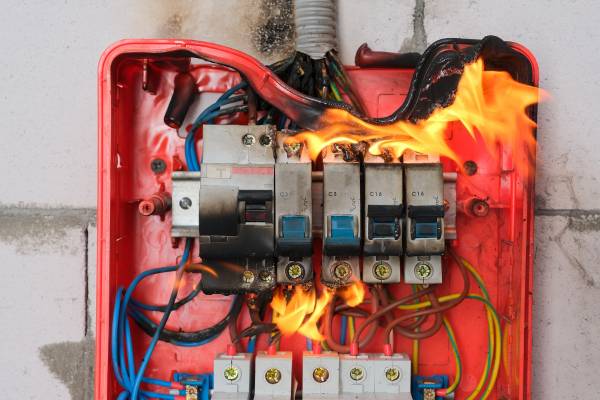
Circuit overload is a common issue that many people face, especially in their bedrooms. One of the main causes of light flickering is when there are too many appliances plugged into one circuit. Think about all the devices that we have in our bedrooms; lamps, phone chargers, alarm clocks, and even fans or air conditioners during hot summer nights. All these gadgets require electricity to function properly, but when they are all plugged into the same circuit, it can become overwhelmed.
Another factor contributing to circuit overload is outdated wiring in older homes. Over time, electrical systems can deteriorate or become outdated with advances in technology. This means that they may not be equipped to handle the increased demand placed on them by our growing collection of electronic devices. As a result, the wires can overheat and cause lights to flicker or even trip circuit breakers.
It’s vital for homeowners to be aware of these potential causes and take action to prevent circuit overload in their bedroom spaces. One way to mitigate this issue is by redistributing your devices across multiple circuits evenly. By spreading out the load among different circuits throughout your home, you reduce the strain on any single circuit and decrease the likelihood of overloading it. Additionally, consider having an electrician inspect your home’s electrical system periodically to ensure its safety and efficiency – especially if you live in an older house with outdated wiring.
Overall, understanding what causes light flickering due to circuit overload is crucial for maintaining a safe and functional bedroom environment.
3. Fluctuating Electrical Voltage
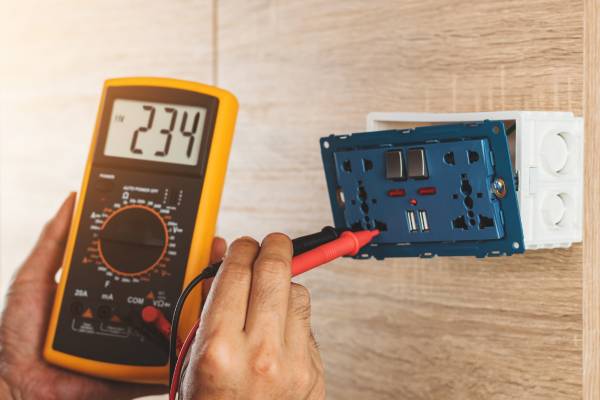
Have you ever found yourself lying in bed, trying to relax, only to be constantly interrupted by the annoying flickering of your bedroom lights? If so, you’re not alone. Light flickering is a common issue caused by fluctuating electrical voltage, and understanding its causes can help you address this frustrating problem. One possible explanation for light flickering in your bedroom could be loose or faulty electrical connections within your home’s wiring system. Over time, these connections can become worn out or loosened due to factors such as vibrations from nearby construction work or general wear and tear. Another likely culprit behind light flickering is the high demand for electricity during peak hours. As more appliances and devices are turned on simultaneously in your neighborhood, the electrical grid may struggle to meet this sudden surge in power consumption, resulting in fluctuations that manifest as light flickering.
To fix the issue of light flickering due to loose or faulty electrical connections, it is important to conduct a thorough inspection of your home’s wiring system. Start by checking all outlets and switches for signs of damage or looseness. If any issues are detected, consider hiring a licensed electrician who can expertly repair or replace faulty components. Additionally, investing in surge protectors can help regulate voltage levels and safeguard sensitive electronic devices from power surges caused by fluctuating electrical voltage. Understanding the causes of light flickering due to fluctuating electrical voltage is crucial for tackling this annoyance effectively.
5. Loose Wiring

Loose wiring can be an annoying and potentially dangerous issue in any home. However, when it happens in the bedroom, it can become even more unsettling. One of the main causes of light flickering in the bedroom is loose wiring. This occurs when the electrical connection between the fixture and the wiring becomes unstable or disconnected over time.
Not only does this flickering create an irritating visual disturbance while trying to relax or sleep, but it also poses a safety risk. Loose wiring can result in overheating, which increases the chances of a fire hazard. It is crucial to address this problem promptly to ensure both your comfort and safety within your own bedroom sanctuary.
If you notice any signs of loose wiring such as flickering lights, buzzing sounds, or outlets that feel warm to the touch, it is important not to ignore them. Contacting a licensed electrician should be your first step in resolving this issue. They will be able to identify and fix any loose connections, helping you regain peace of mind while ensuring a safe environment for years to come.
6. Main Connection Issues
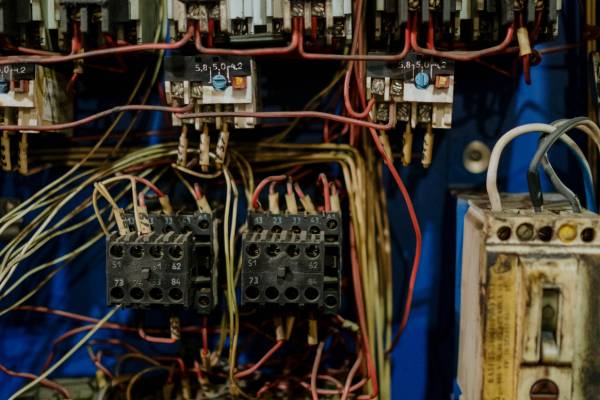
One of the most frustrating connection issues experienced by many individuals is light flickering in their bedrooms. This annoying phenomenon can disrupt our relaxation time and even disturb our sleep. While we often attribute light flickering to a faulty bulb or electrical wiring, there are several other surprising causes that can contribute to this troublesome issue.
One possible cause of light flickering in a bedroom could be an outdated dimmer switch. Older dimmer switches may struggle to regulate the flow of electricity, resulting in fluctuating currents and subsequently causing lights to flicker. Another potential culprit could be poor grounding of electrical outlets in the room. Improper grounding can lead to electrical surges and inconsistencies, leading to sporadic flickering over time. Additionally, if your bedroom is located near heavy machinery or appliances that draw a large amount of power when turned on, this could also result in lights flickering whenever these devices start up.
Understanding the various causes behind light flickering in bedrooms is essential for addressing these annoying connection issues effectively. By identifying these less obvious triggers and taking appropriate measures such as upgrading dimmer switches or ensuring proper grounding, one can eliminate those bothersome interruptions and enjoy a peaceful ambiance at home.
Troubleshooting of Light Flickering
1. Tighten loose bulbs

Tired of dealing with annoying flickering lights in your bedroom? Don’t worry, we’ve got you covered! Flickering lights can be a real headache, but the solution might be simpler than you think. One common reason for this issue is loose bulbs. Over time, the constant vibration from daily activities can loosen the connection between the bulb and socket, resulting in a flickering light that can drive anyone crazy.
To solve this problem, start by turning off the light switch and disconnecting any power source to the affected room. Once that’s done, grab a ladder or stool to safely reach the bulb. Gently twist it counterclockwise until it loosens from its socket. Inspect both the bulb and socket for any signs of damage or debris that could have contributed to their poor connection. If everything looks fine, clean both parts before screwing in the bulb tightly once again.
If tightening loose bulbs doesn’t fix your flickering light issue, then there might be another underlying cause at play. It may be worth considering other factors such as faulty wiring or a problematic electrical circuit in your home. In such cases, it’s best to consult a professional electrician who can identify and resolve these more complex problems safely and efficiently.
Remember: while tightening loose bulbs might seem like a simple task, it’s always important to prioritize safety when dealing with electrical components.
2. Upgrade old or incompatible switches
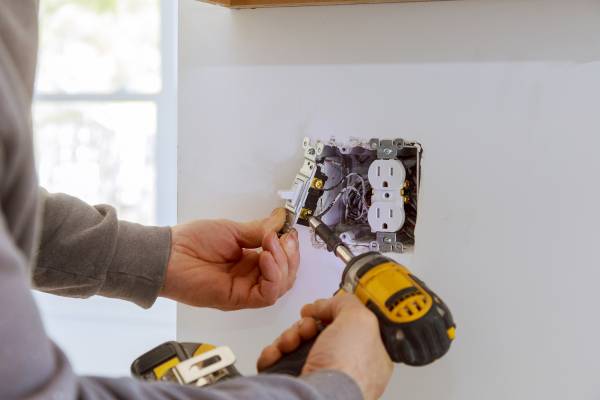
Upgrading old or incompatible switches is a crucial task that not only ensures the safety of your electrical system but also enhances the overall functionality and style of your home. If you’ve been experiencing the annoying dilemma of light flickering in your bedroom, it may be time to consider upgrading your switches. Troubleshooting such a problem can be baffling, as there could be multiple factors at play. Sometimes, the culprit lies in outdated or incompatible switches that are unable to handle the electrical load required by modern lighting fixtures.
By upgrading to new and compatible switches, you can bid farewell to those dreaded moments of flickering lights. Additionally, this upgrade allows you to introduce advanced features like dimmers or smart controls into your bedroom lighting setup. Not only will these new switches eradicate flickering issues but they will also enhance convenience and create a more comfortable environment for reading or restful sleep. It’s essential to consult an electrician who can guide you through selecting the right type of switch for your specific needs and ensure proper installation.
In conclusion, troubleshooting light flickering problems in bedrooms often leads us down the path of upgrading old or incompatible switches. Investing in modern and compatible options not only resolves flickering issues but also opens up possibilities for improved functionality and aesthetics within our living spaces. From dimmers to smart controls, these upgraded switches provide both convenience and comfort in managing our bedroom lighting systems effectively. So why settle for unreliable old switches when you deserve an electrical setup that matches contemporary demands?
3. Try a smart bulb
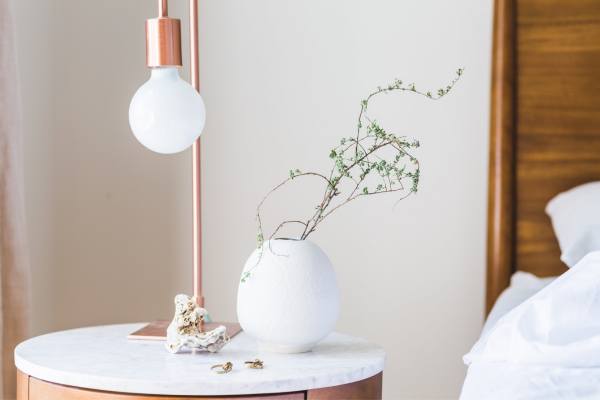
If you’ve ever experienced the annoyance of a flickering light in your bedroom, then it’s time to consider trying a smart bulb. These innovative lighting solutions not only provide instant illumination but also offer several features that can enhance your sleep environment. One common cause of light flickering is voltage fluctuations or incompatible bulbs with the existing fixtures. A smart bulb eliminates this issue by intelligently adjusting to varying voltages, ensuring a stable and consistent light source.
Another advantage of using a smart bulb in your bedroom is the ability to control its brightness and color temperature with just a few taps on your smartphone. This feature comes in handy when you’re winding down at night and want to create a calm and relaxing atmosphere before bedtime. With adjustable color temperatures, you can set the perfect ambiance for reading or watching TV without straining your eyes. Plus, some smart bulbs even have preset modes tailored specifically for sleep, gradually dimming as you drift off into dreamland.
No more waking up startled because you forgot to turn off the lights! Smart bulbs allow you to schedule automatic shut-offs based on your preferred sleeping routine, preventing any disturbances during the night. Whether you want them to gradually fade away after you’ve fallen asleep or simply turn off at a specific time each night, these bulbs make it easy to customize lighting controls according to your needs. Say goodbye to those late-night trips across the dark room; let your smart bulb worry about keeping things illuminated while you enjoy uninterrupted slumber!
4. Check the current
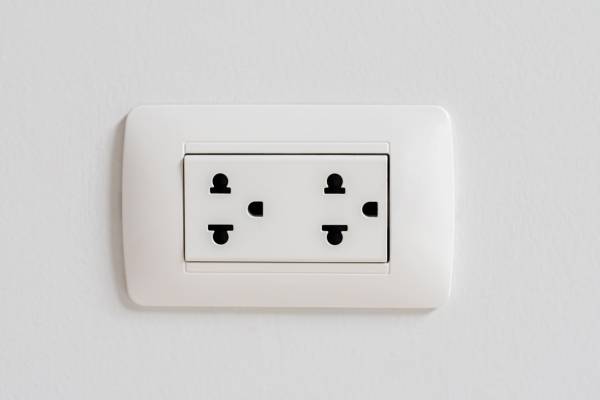
One common issue that many people face in their bedrooms is the annoying phenomenon of light flickering. It can be incredibly frustrating to lie in bed and have the room constantly illuminated by a flickering light bulb. While there are several reasons why this may occur, one frequently overlooked factor is the check current.
The check current refers to the amount of electrical flow that passes through a circuit, and if it’s not properly regulated, it can cause light bulbs to flicker. To troubleshoot this issue, it’s important to first check if there are any loose connections or faulty wiring in the bedroom’s electrical system. Sometimes, simply tightening loose wires or replacing damaged cables can solve the problem.
Another potential cause for light flickering is an overloaded circuit. Bedrooms often have multiple electrical devices plugged into outlets, such as lamps, charging stations, or alarm clocks. If these devices exceed the capacity of the circuit they’re connected to, it can result in intermittent power fluctuations and subsequently lead to flickering lights. In such cases, redistributing appliances across different circuits or upgrading your home’s electrical system might be necessary solutions. About troubleshooting light flickering issues in your bedroom – don’t forget about checking the current flow!
5. Beware loose wiring
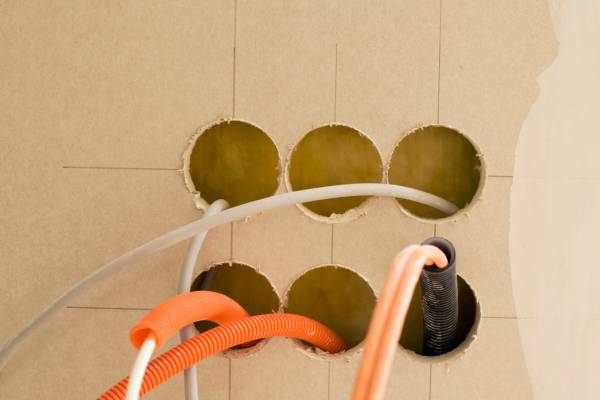
Whether it’s a horror movie or a haunted house, a flickering light is always an essential element of creating an eerie ambiance. However, when that flickering light appears unexpectedly in our own bedrooms, it can be anything but thrilling. Troubleshooting the cause of light flickering can be frustrating and time-consuming, often leading us down a rabbit hole of possible culprits. But before you start blaming supernatural entities for your bedroom’s newfound spooky atmosphere, take a moment to consider one common culprit: loose wiring.
Loose wiring is like the ghost in the machine you never knew existed until it starts playing tricks on your electrical system. It may sound harmless at first, but underneath its benign facade lies the potential for serious hazards. Over time, vibrations from normal household activities like opening doors or walking across the floor can cause electrical connections to loosen and become unstable. This leads to disruptions in electricity flow and ultimately results in those dreaded flickering lights that keep you up at night.
But why should we be concerned about something as seemingly insignificant as flickering lights? Well, loose wiring isn’t just irritating; it poses real risks to our safety. An unstable electrical connection generates heat and sparks which can ignite nearby flammable materials or trigger electrical fires. Additionally, inconsistent voltage caused by loose wiring can damage appliances and electronics plugged into affected circuits.
6. Use LED bulbs instead of traditional ones

Switching to LED bulbs can have a significant impact on both the environment and your home. One of the most common issues with traditional light bulbs is flickering, especially in the bedroom where a calming and stable lighting atmosphere is crucial for relaxation and sleep. LED bulbs are not only energy-efficient but also eliminate this frustrating problem altogether. With their advanced technology, these bulbs do not flicker like incandescent or fluorescent lights, providing a consistent source of illumination that ensures tranquility in your sleeping sanctuary.
Furthermore, LED bulbs offer various other benefits beyond eliminating flickering. They have a longer lifespan compared to traditional counterparts, reducing the need for frequent replacements and saving you money in the long run. Additionally, these bulbs emit little heat which helps keep your bedroom cooler during warm summer nights. This feature not only increases comfort but also contributes to energy savings by reducing the workload on cooling systems. Ultimately, making the switch to LED bulbs enhances both your wellbeing and sustainability efforts while providing an overall more reliable lighting solution for your bedroom.
7. Install a voltage regulator to stabilize electrical current
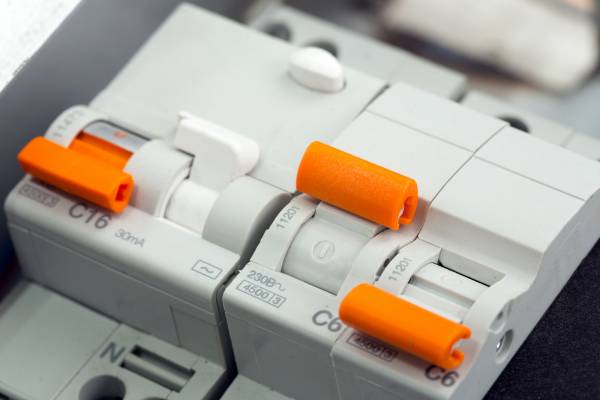
One common issue that homeowners often encounter is light flickering in their bedrooms. This frustrating problem can not only be irritating but also disrupt sleep and affect the overall ambience of the room. While there can be several reasons behind this annoying phenomenon, one effective solution is to install a voltage regulator to stabilize the electrical current.
A voltage regulator acts as a barrier between the main power supply and your electrical devices, ensuring a consistent flow of electricity at all times. By regulating the voltage fluctuations caused by various external factors such as power surges or faulty wiring, a voltage regulator effectively eliminates light flickering in your bedroom. It provides stable and steady power to all your devices, protecting them from potential damage while maintaining optimal performance.
Moreover, installing a voltage regulator offers numerous benefits beyond resolving light flickering issues. It extends the lifespan of your electronic appliances by preventing overheating or sudden spikes in energy levels. Additionally, it safeguards sensitive electronics like computers and smartphones from unexpected power fluctuations that could potentially result in data loss or hardware damage.
Overall, investing in a voltage regulator provides an efficient and long-term solution to troubleshoot light flickering problems in your bedroom. Not only does it offer stability to your home’s electrical system but also protects valuable electronic devices from potential harm. So why put up with annoying flickering lights when you can enjoy uninterrupted illumination through simple installation?
8. Consult an electrician if problem persists: Professional help
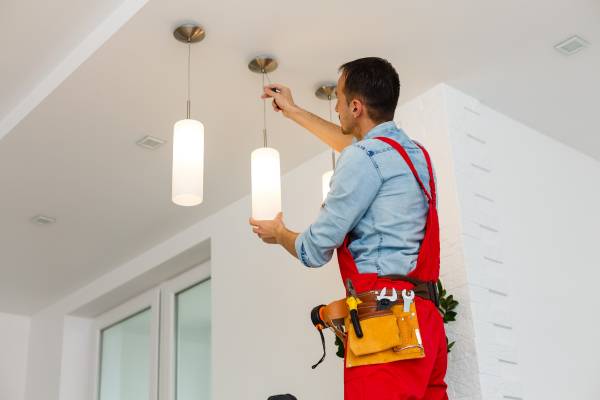
If you find yourself constantly dealing with the annoying issue of flickering lights in your bedroom, despite your best efforts to troubleshoot and fix it on your own, it may be time to consult an electrician. While DIY fixes can be helpful for minor issues, persistent problems often require the expertise of a professional. Electricians are trained and experienced in identifying the root cause of electrical problems, ensuring that they are resolved safely and effectively.
One reason why it’s crucial to seek professional help is because flickering lights could indicate a more serious underlying issue within your electrical system. It could be a sign of faulty wiring or loose connections, both of which can pose significant risks such as electrical fires or electric shock hazards. By consulting an electrician, you gain peace of mind knowing that the problem will be thoroughly assessed and addressed without compromising your safety.
Furthermore, seeking professional help can also save you time and frustration. While attempting DIY repairs might seem cost-effective at first glance, if these quick fixes don’t get to the root cause of the flickering lights in your bedroom, you’ll likely find yourself stuck in a cycle of temporary solutions that offer no long-term relief. With an electrician’s expert knowledge and specialized tools at their disposal, they can efficiently diagnose and fix the issue once and for all – allowing you to finally enjoy uninterrupted lighting in your haven.
Conclusion
In conclusion, if you are experiencing a flickering bedroom light, there can be several potential causes. It could be as simple as a loose bulb or faulty wiring, or it may indicate a more serious electrical issue. It is important to address this problem promptly to prevent any further damage or potential safety hazards. If you are unsure about how to fix the problem yourself, it is always best to seek assistance from a qualified electrician. Remember, taking action now can ensure a safe and comfortable environment in your bedroom.
